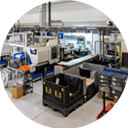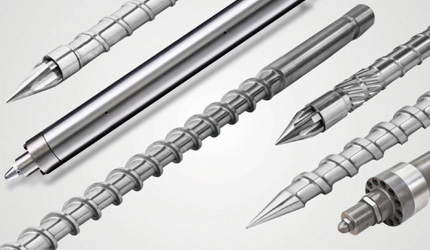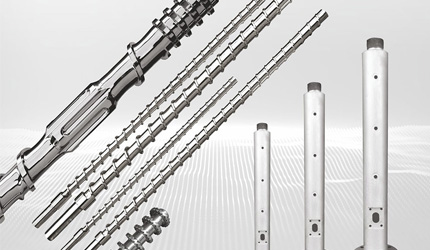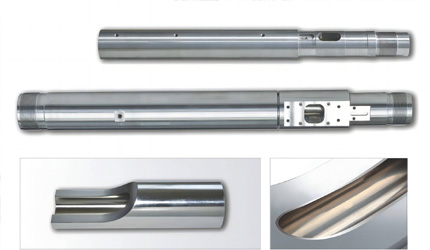Exploring Twin Screw Feeder Design: Key Components and Engineering Considerations
Exploring Twin Screw Feeder Design: Key Components and Engineering Considerations
Twin Screw Feeder Design Basics and Working Principle
Definition and Function of a Twin Screw Feeder in Material Handling
A twin screw feeder serves as a precise feeding device. It moves powders, pellets, or resins into extrusion or mixing lines in a steady manner. Different from single-screw feeders, twin screw setups feature two interlocking screws that rotate inside a tight barrel. This arrangement creates uniform material flow. It avoids pulsing or clumping, problems that often arise with sticky or small-particle powders.
In extrusion operations, consistent feeding shapes melt evenness and final product quality. A 2024 study in Nature Scientific Reports found that matching the speed between the mixer and twin screws boosted mass flow steadiness. This outperformed single-screw methods. It also lowered waste from uneven supply.
Twin screw feeders control the pace at which solid materials enter follow-on equipment. The paired screws operate in step to push material ahead under fixed volume guidance.
This setup yields clear benefits. It limits material pile-up. It supports ongoing self-clearing. It delivers reliable dosing precision. These traits prove vital for small powders such as calcium carbonate, PVC resin, or pigment blends.
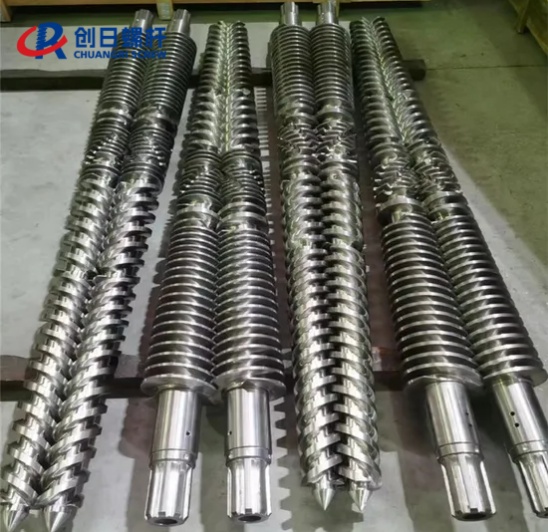
Single-Screw Feeder vs Twin Screw Feeder: Performance and Flow Control Comparison
| Feature | Single-Screw Feeder | Twin Screw Feeder |
| Flow Type | Free-flowing materials only | Handles sticky, cohesive, or fibrous materials |
| Feed Accuracy | ±5–10% typical | ±1–2% achievable |
| Cleaning | Manual disassembly | Continuous self-cleaning possible |
| Torque Stability | Moderate | High and consistent |
| Typical Use | Granular or free-flow powders | PVC, WPC, masterbatch, recycled compounds |
Twin screw feeders surpass single-screw versions in dealing with tough materials. Where feeding precision shapes product uniformity, they provide a clear edge.
Applications of Twin Screw Feeders in Plastic Extrusion and Compounding Processes
Twin screw feeders play a central role in reliable material dosing for extrusion, blending, and reuse. In PVC or wood-plastic composite board production, feeding variations can produce density variations and melt heat shifts. Pairing accurate twin screw feeders promotes uniform melt movement. It supports even color mixing. It leads to smoother surface results in completed items.
Key Mechanical Components in Twin Screw Feeder Assembly and Design
The machine layout of a twin screw feeder shapes its dependability, precision, and service duration. From the screws to the motor, each piece must operate in harmony. This sustains even flow and curbs variations.
Screw Geometry, Pitch, and Flight Design for Accurate Metering
The form of the screw flights directs material advance, compression, and release pace.
-
Pitch manages output volume.
-
Flight height sets shear force and rear pressure.
-
Interlocking layout fosters self-clearing and balanced flow.
CHUANGRI SCREW crafts each screw according to material movement traits and output demands. Flights receive exact machining for size fidelity. They lessen inner friction as well. This strengthens feeding reliability for items like PVC powder or additive-filled resins.
Feeder Trough and Housing Material Selection for Durability and Cleanability
The trough and casing face abrasion and warmth during nonstop runs. Alloy steels, including 38CrMoAlA and SKD61, find common application. They resist hardness and erosion.
Following nitriding or bimetallic coating, surface firmness reaches HV900–1000. This prolongs usability notably. Smooth interior surfaces (Ra ≤ 0.4 μm) further curb residue formation. They ease upkeep. This aspect gains importance in varied material production.
Drive System and Gearbox Design for Torque and Speed Control
Uniform torque proves necessary for coordinated screw motion. Robust gearboxes featuring tempered gears and enclosed bearings limit backlash and shudder.
Variable-frequency drives (VFDs) permit ongoing screw pace tuning. This sustains feed volumes despite shifts in bulk density.
Integration of Hopper, Load Cell, and Feeding System Control
Contemporary feeders link weighing devices and PLC-driven controls. Instant material mass tracking triggers automatic screw pace shifts for weight-based feeding precision.
This method trims raw stock loss. It secures product uniformity. It holds special value for masterbatch and pigment dosing, where exact addition proves essential.
Twin Screw Feeder Design Considerations for Optimal Performance
Effective feeder layout merges flow dynamics, erosion defense, and runtime trustworthiness.
Material Flow Characteristics and Cohesive Behavior in Feeder Performance
Material mobility stems from granule form, adhesion, and dampness. Strong-adhering powders frequently develop arches or dead zones within hoppers.
Twin screw feeders employing self-scraping interlocking flights halt compaction. They sustain material in nonstop motion. For tiny fillers and moisture-absorbing substances, incorporating a ventilated or climate-managed feed section bolsters consistency further.
Screw Speed, Diameter, and L/D Ratio Selection for Precision Feeding
The L/D ratio (length-to-diameter) governs dwell duration and pressure creation. Industrial configurations commonly employ ratios from 20 to 55, aligned with substance kind and supply pace.
Wear and Corrosion Resistance in Twin Screw Components
Erosive or chemically harsh additives erode screw exteriors. This erodes precision.
Shielding layers such as tungsten carbide (HVOF) or nickel alloys furnish robust defense against abrasion and decay. These exterior applications sustain form constancy across prolonged output phases. They diminish the halt periods and substitution expenses.
Maintenance and Cleaning Strategies for Long-Term Feeder Stability
Segmented feeder builds streamline servicing. Removable screw units facilitate swift extraction for washing or review, absent complete dismantling.
Routine greasing, positioning verifications, and climate oversight remain indispensable. Adhering to a foresight servicing timetable grounded in operating duration averts abrupt functional breakdowns. It upholds output regularity.
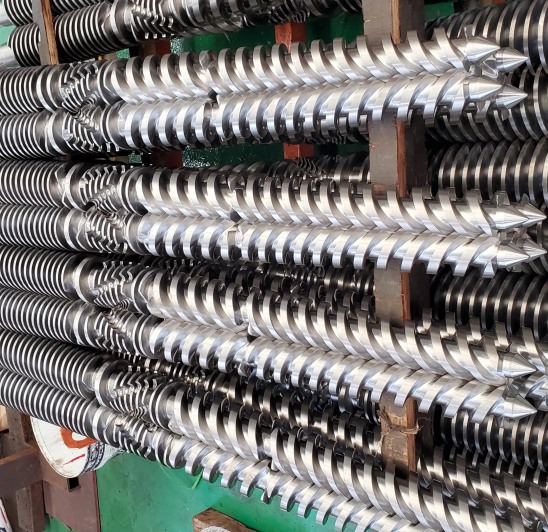
Design Optimization and OEM/ODM Customization with CHUANGRI SCREW
Specification Selection and Engineering Support for Extrusion Lines
Identifying the appropriate feeder entails weighing procedure yield, polymer variety, and requisite exactness. Designers account for elements including screw breadth, spacing, exterior application, and drive demands.
CHUANGRI SCREW aids manufacturing partners via CAD rendering and trial-founded review to confirm alignment with extrusion and granulation apparatuses.
Custom Twin Screw Feeder Design and OEM Production Capabilities
CHUANGRI SCREW formulates bespoke twin screw configurations for substances like PVC, PE, and wood-plastic composites.
The PVC Conical Twin-Screw Barrel exemplifies this. Its bimetallic inner lining and three-sided alloy coating sustain elevated mechanical robustness and melt uniformity. This persists amid calcium carbonate concentrations from 5–300%. Such a configuration markedly curtails abrasion and lengthens operational duration.
Quality Assurance, Heat Treatment, and Bimetallic Coating Processes
To secure form consistency, CHUANGRI SCREW utilizes contemporary fabrication procedures encompassing gas tempering, rotary pouring, and meticulous abrading.
Every screw-casing unit undergoes gauging for linearity (≤0.02 mm allowance) and exterior polish (Ra ≤ 0.4 μm). Outcomes encompass reliable mating, fluid rotation, and prolonged endurance beneath elevated-load extrusion scenarios.
Global Delivery, Lead Time, and After-Sales Support Network
Positioned adjacent to Ningbo and Shanghai harbors, CHUANGRI SCREW guarantees streamlined conveyance for international associates. Conventional elements dispatch in mere days. Tailor-made constituents adhere to rigorous timetables.
Thorough technical records and enduring assistance affirm dependable apparatus function spanning sundry output milieus.
CHUANGRI SCREW Twin Screw Feeder Solutions and Industry Applications
Company Overview and Production Capabilities
Founded in 1990, CHUANGRI SCREW concentrates on formulating and fabricating screws, casings, and comprehensive supply resolutions for extrusion and injection forming.
Its unified 12,500 ㎡ premises incorporate CNC fabrication, tempering, and surfacing apparatus, facilitating absolute internal excellence oversight.
Core Products: Parallel Twin Screw and Conical Twin Screw Feed Systems
-
Parallel Twin Screw Barrel – Yields reliable pressure and elevated-yield consistency for polymer extrusion.
-
Bimetallic Twin Screw and Barrel – Constructed for erosive mixtures, affording protracted utility duration.
-
PVC Conical Twin-Screw Barrel – Suited for PVC, wood-plastic composites, and SPC fabrication conduits necessitating stringent procedure oversight.
Advantages of CHUANGRI SCREW Design – Precision, Output, and Longevity
-
Form exactness within ±0.02 mm.
-
Exterior firmness reaching HV900–1000 post-tempering.
-
Extended functional span relative to conventional tempered configurations.
-
Reliable yield amid fluctuating operational milieus.
Real-World Performance Insights from Extrusion and Pelletizing Lines
Operational evaluations in extrusion facilities reveal that refining twin screw feeder morphology yields tangible elevations in throughput and augmented melt thermal equilibrium. This underscores the connection between meticulous mechanical positioning and dependable substance supply.
FAQ
Q: What is the standard L/D ratio for a twin screw feeder in plastic processing?
A: Industrial configurations predominantly employ L/D ratios spanning 20 to 55. Briefer variants accommodate elevated-viscosity polymers, whereas extended screws augment blending and pressure accrual for minuscule particulates.
Q: How to choose between co-rotating and counter-rotating twin screw designs?
A: Co-rotating screws furnish exemplary self-purging and amalgamation, whereas counter-rotating variants engender augmented compression—favored for PVC and wood-plastic composite extrusion.
Q: What materials benefit most from bimetallic or nitrided screw coatings?
A: Erosive inclusions such as glass filaments, calcium carbonate, or ignition-suppressant supplements derive substantial gains. Exterior layers safeguard screw peripheries, assuring persistent exactness throughout protracted fabrication sequences.
Q: How can twin screw feeder performance be optimized for cohesive materials?
A: Appropriate hopper morphology, interlocking self-abrading screws, and modifiable screw velocity sustain consistent progression for adherent or moisture-retentive powders.
Q: Which brand offers reliable twin screw feeder systems for extrusion lines?
A: CHUANGRI SCREW formulates and fabricates meticulously crafted twin screw feeders, screws, and casings, esteemed internationally for their dependability, fabrication exactness, and protracted utility duration.

